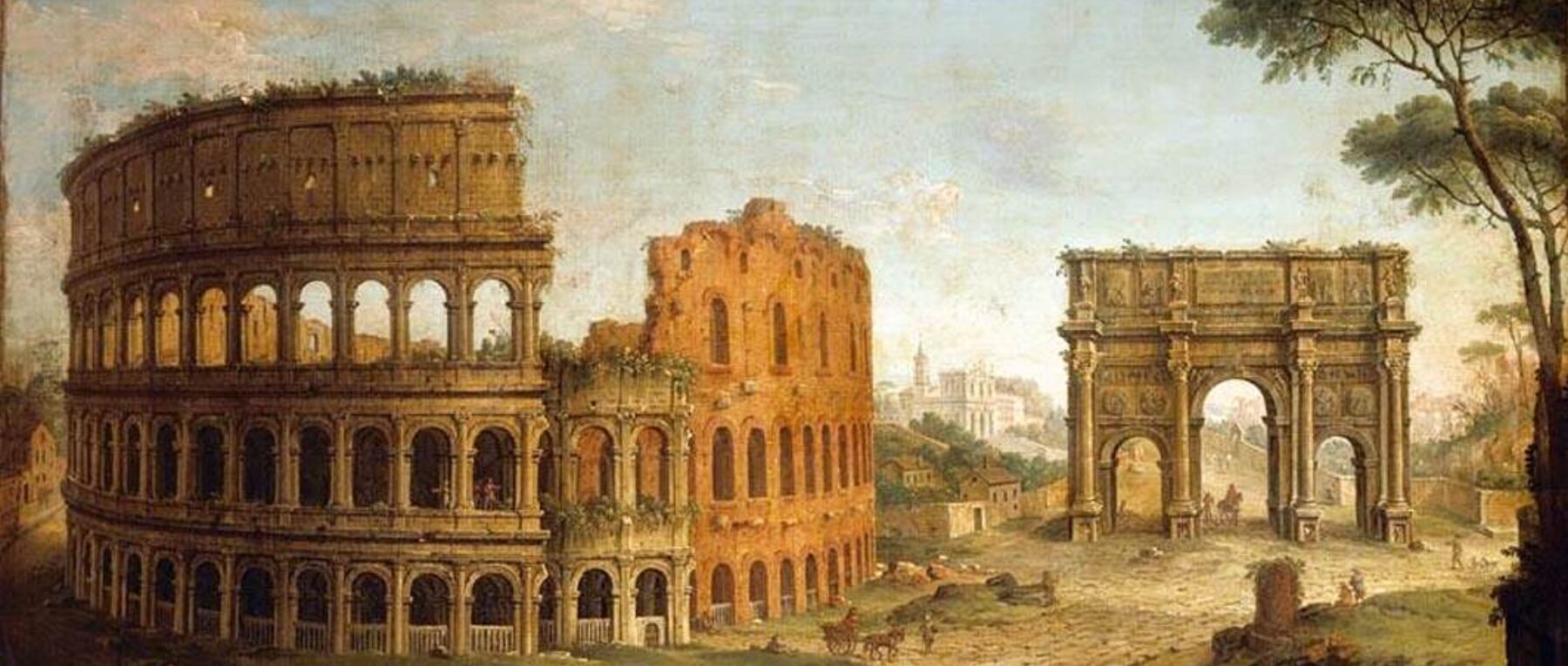They say Rome wasn’t built in a day. True. It took a long time, many centuries in fact. But when did it begin? After all, every city has an origin and Rome is no exception, even if it is called the eternal city. So what is Rome’s?
A symbol of a city and a people
Part of it, so the legend goes, is recorded by ancient historians Livy and Plutarch amongst others and involves two brothers suckled by a she-wolf on the banks of the River Tiber.
 |
| The beginning and the end of the River Tiber (Source: Wikipedia) |
Although only a small moment in the entire story, nevertheless it does encapsulate something essential about Rome’s origin and character. For this reason it is perhaps always included and even seen as symbolic of the myth entirely.
From ancient times right down to the present day, this iconic scene has been a symbol of the city of Rome and its people. It is instantly recognisable with the she-wolf, her head turned, teeth bared, standing astride as the naked twins suckle beneath her.
 |
| The she-wolf with the infants Romulus and Remus being suckled. Bronze, Etruscan 4th Century BCE. The twins were added in the 15th Century. Capitoline Museum, Rome. (Source: Ancient Encyclopedia) |
The legend goes something like this…
His younger brother, Amulius, having usurped the throne and fearing there would be a threat to it from Numitors’ daughter She-Rhea, placed her in the vestal virgins, so as to ensure she could not bare any offspring.
Despite this, She-Rhea was soon found to be pregnant. At the time, some said the father was the god Mars, others Hercules, and so it was therefore decided that the boys when born, were to be left to die in the wild, a kind of infanticide, so as to remove the threat to Amulius’s’ throne.
As it happened, the servant, being unable to leave the boys to die, placed them into a small basket on the river Tiber.
 |
| The river god Tiberinus. In the lower left hand corner can been seen the infant twins, Romulus and Remus (Source: Wikipedia) |
There the twins were carried along by the current, swollen as it was by the river god Tiberinus, where it came ashore at the present location of Rome. Once ashore they were found by a she-wolf, who suckled them, and fed and watched by a woodpecker.
Finally, a shepherd called Faustalinus discovered them and took them to his wife to be brought up.
When the twins were grown up, Romulus and Remus set up rival settlements on the hills close to where they were found by the she-wolf. On one occasion, Romulus, incensed at Remus jumping his wall, killed Remus with a single blow to the head.
Romulus went on to found the city of Rome, to which he gave his name. The traditional date for this founding is 753BC.
 |
| Altar to Mars the supposed divine father of Romulus and Remus. The river god Tiberinus and the twins being suckled by the she-wolf can be seen at the bottom. (Source: Wikipedia) |
What’s in an image?
The survival of the infant twins against the odds — that they were nursed and suckled by a she-wolf of all things — is indicative of Rome’s irrepressible will to survive and overcome her opponents time and time again.
Whether it was the Samnites, the Carthaginians or the Gauls, Rome, even when all seemed lost, was able to turn the tide, survive and ultimately claim victory.
At times it seemed as if by some divine hand, she was fated to do so. The image of the she-wolf suckling the infant twins captures a sense of this, in that, how else could twin infants survive in such circumstances, were it not for some divine hand guiding their fate. Whether or not that is actually the case is not important, that the Romans took it to be the case is.
This image of the she-wolf suckling the twins captures that indomitable spirit in its birth.
Sources:Plutarch, Life of Romulus
Scarre, Chris, The Penguin Historical Atlas of Ancient Rome, Penguin Books, London, 1995 p. 20-21
Titus Livius, The History of Rome, Book 1, trans Rev. Canon Roberts, Everyman’s Library, J. M. Dent & Sons, Ltd., London, 1905
https://www.ancient.eu/Romulus_and_Remus/
Related




